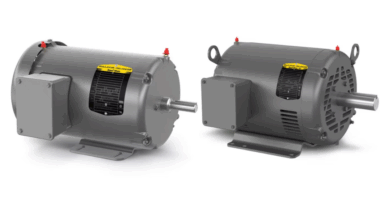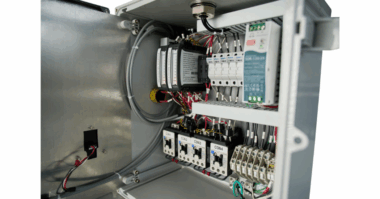An investment in trades training is an investment in the trades industries themselves
By Dustin Bowerman
Industries that rely on skilled labor face a well-documented ongoing challenge. Because of the continuing labor shortage among the skilled trades, many contractors struggle to meet public demand for their essential services. Evolving technology, regulatory standards, and consumer expectations compound the situation.
These challenges also present a unique opportunity for manufacturers, contractors, distributors, professional organizations, and educators to affirm and reinforce their commitment to high-quality training. Strong professional training helps today’s skilled workers make the most of their career opportunities while empowering their employers to meet public demand. At the same time, innovative strategies and approaches attract and prepare new talent entering the field. A shared approach to training supports existing workers and helps develop a new generation of skilled trades workers, building a sustainable workforce that will fuel the industry’s continuing success and growth.
A well-trained skilled workforce is vital to the success of the plumbing, heating, and cooling industry. Regular training also keeps technicians up to date as technology continues to evolve and helps them navigate the constantly changing landscape of local, state, and federal regulations.
When we have a well-trained industry, homeowners and business owners can count on safe, reliable access to heating and hot water.
Even as our industry evolves, the foundational principles of effective training have remained consistent, in large part because of the proven benefits:
- Safety: Training keeps technicians safe while they’re on the job and protects customers. Contractors can enhance productivity and customer experience by mitigating the cost of accidents, callbacks, repairs, and equipment replacement that result from untrained work — not to mention the reputational damage associated with such failures.
- Service: Trained workers deliver value and customer satisfaction that are critical to a contractor’s bottom line. Operating effectively in the field, they can properly diagnose and treat issues right the first time and respond to more calls. In addition to productivity and efficiency, they are good ambassadors for your brand in the field.
- Continuity: Hiring and onboarding new employees is time-consuming and expensive. In today’s labor market, turnover can make the difference between profitability and losing money. When they have adequate preparation and support for the job and recognize future career opportunities are available, workers are less likely to move from one job to another. Continuity in employment is also a powerful recruiting tool — new workers are attracted to positions that offer security and career laddering opportunities.
- Customer experience: Customers rely on skilled trades workers for essential functions. Trained professional experts build consumer confidence, supporting the industry’s overall reputation and driving recurring business and referrals, which are crucial in today’s hypercompetitive market.
It’s not always easy to commit to the level of quality training necessary to sustain a truly skilled workforce. When many of them don’t have enough workers to meet existing demand, paying for technicians to go to training instead of a job site seems counterintuitive.
In the long run, however, quality training more than pays for itself. The productivity, efficiency, and accuracy gained will offset the investment of a few training hours. That’s how everyone in our industry must view training — as an investment.
If employers recognized the long-term benefits training offers their technicians and customers — and how those benefits contribute to the bottom line of their own companies — our industry could undergo a transformation.
A significant part of any meaningful training program will involve hands-on learning. Lasting learning in the skilled trades requires substantial time spent working on real equipment with real tools.
Contractors and technicians are advised to take advantage of the convenience and accessibility that virtual methods of training offer. E-learning, simulations, and other technology-based online opportunities can be valuable supplements to traditional training. Virtual training can replicate some of the elements of live interaction and may one day offer sufficient sensory feedback, guided technical support, and AI-based responsiveness to match field training.
In addition to dedicated online learning platforms, easily accessible digital tools are another way to support continuing learning and improvement. Some valuable options include digital pocket catalogs that use QR codes to ensure quick access to the most recent product specifications and documents and messaging tools that allow contractors to text customers to gather online reviews, connect with leads, and send promotional campaigns from a single easily accessible inbox.
Bradford White Corp.’s For the Pro® platform helps contractors connect with customers and distributors and supports technicians in the field. Available for desktop and a new For the Pro® mobile app, users can scan equipment to quickly check warranty status and access all related technical documents, including I/O manuals and troubleshooting guides; search product model numbers to instantly retrieve product information including spec sheets, parts lists, and product descriptions; and get fast, direct access to sizing and cross-reference tools, the For the Pro® Training Academy e-learning program, and time-saving step-by-step videos.
But in-person, hands-on engagement with tools and equipment in a real-world setting has proven to be the most effective and preferred method of training for skilled trades professionals. True training involves information and action. Training is watching and then doing, learning through hands-on experience. Following up virtual training with hands-on practice is essential for fully translating information into actionable skill. In-person training validates the practices and concepts seen on the screen.
An investment in trades training is an investment in the trades industries themselves. Full foundational training and ongoing education opportunities allow industry professionals to advance their careers and keep up with the latest technology and regulations. Training ensures that the public will continue to have access to the essential services our industry provides and that future generations will continue to have opportunities for rewarding careers in the skilled trades.
Caption for above image: TRAINED PROFESSIONALS: Strong professional training helps today’s skilled workers make the most of their career opportunities while empowering their employers to meet public demand. (Courtesy of Freepik)
Originally published on Air Conditioning | Heating | Refrigeration News https://www.achrnews.com/




